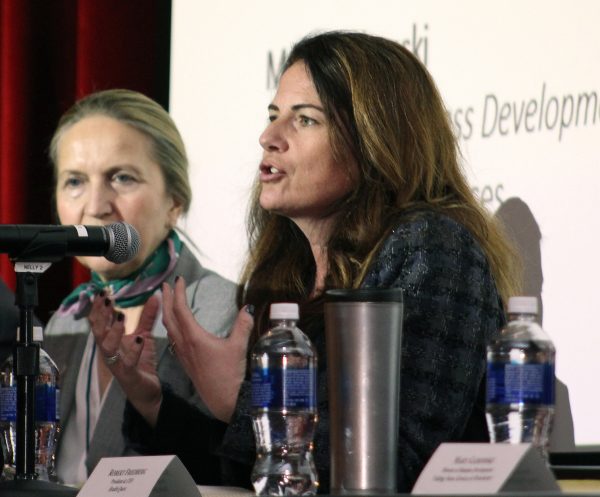‘Eds and Meds’ roundtable addresses innovation in health care

Regardless of the status of the Affordable Care Act in Washington, D.C., ever-changing technology is causing the medical field to evolve rapidly and in turn forcing care providers in the Hudson Valley to keep up.
A roundtable discussion hosted by the Hudson Valley Economic Development Corp. at Marist College on March 24 addressed just how both care providers and educators can keep pace with a shifting field.
“Some of our challenges are trying to predict where technology is going to go,” said Robert Friedberg, president and CEO of Health Quest. “You can imagine we are building a $500 million building and we are trying to predict in today”™s world what the technology is going to look like 10 to 15 years from now.”
The $500 million project Friedberg was referring to was Health Quest”™s construction of a 696,000-square-foot, seven-level inpatient pavilion at its Vassar Brothers Medical Center in Poughkeepsie.
He added that the project involves “being able to design into the building the capability to accommodate technology where we don”™t know what it is yet.”
Friedberg was one of eight speakers on a panel of health care professionals and educators at the second annual EDs & MEDs Summit. The program was part of HVEDC”™s “industry cluster,” which focuses on matching the region”™s colleges and universities with its major health care providers to help spur job growth.
“It”™s so critical to have a bias in finding talent that understand innovation and doing things differently,” said Joseph DiCarlo, senior vice president and director of human resources at Westmed Practice Partners, a group of more than 350 doctors.
Mary Gadomski, director of business development at Visiting Nurse Services in Westchester, said that the rapid shift in technologies is seen in the home care field as well, where nurses need to be increasingly skilled and tech savvy.
“We”™re looking at all the technologies that can possibly help us support the patient in a home,” Gadomski said.
That extends to the classroom as well. Representatives from SUNY Orange, SUNY Dutchess and Touro College of Osteopathic Medicine in Middletown College discussed how they have tried to boost their own technological offerings. Kenneth Steier, executive dean and chief academic officer at Touro College of Osteopathic Medicine, said the college has given students opportunities to work with 3-D anatomy systems and robotic patients.
“We can recreate just about any medical emergency there is and have the students learn that way,” Steier said.
Medical providers have even tried to get in on driving innovation themselves. Virginia Feldman, a practicing surgeon in Middletown, co-founded a business, Nexus Health Resources, which utilizes software to help track and coordinate care as patients transfer from a hospital to home.
“You see patients who fall through the cracks and have bad outcomes for seemingly very simple problems,” Feldman said, adding that Nexus Health Resources “provides a service to be able to continue to follow patients during that really tentative time, those first 30 days after they were discharged from facilities.”
Feldman said that any medical technology should have the main goal of decreasing the total cost of care and allowing patients to be in their most comfortable setting.
Along with Feldman, Steier, DiCarlo, Gadomski and Friedberg, the panel featured: SUNY Dutchess President Pamela Edington; Kathleen S. Lill, director of Marist College”™s physician assistant program and SUNY Orange President Kristine Young.